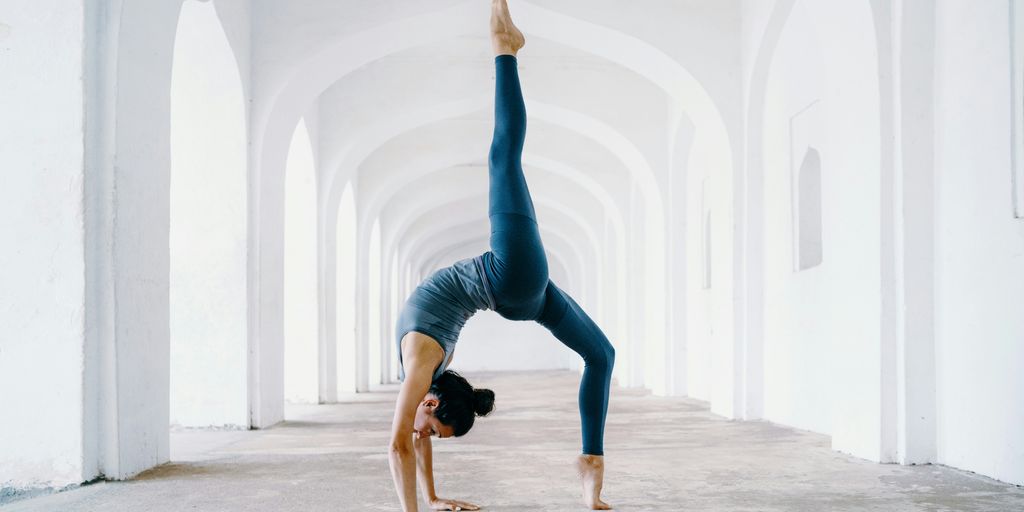
Unlocking Inner Peace: The Essential Meditation Rule You Need to Know
Finding a sense of calm inside is something many people want. It's not about ignoring problems, but about having a steady mind no matter what's going on around you. This article talks about a simple meditation rule that can help you get there. It's a way to feel more settled and happy in your daily life.
Key Takeaways
- The main meditation rule is about just noticing things without judging them.
- Doing meditation every day helps you build a strong habit and get better at it.
- You can get a clearer mind by focusing on your breath and keeping distractions away.
- It's good to let yourself feel emotions, but don't get stuck on them.
- When you have inner peace, it makes your relationships better and helps you feel good overall.
Embracing The Core Meditation Rule
Understanding The Foundational Principle
Meditation isn't about stopping your thoughts; it's about changing your relationship with them. The main idea is to simply notice what's happening, without getting caught up in it. Think of your mind like a busy street, and your thoughts are the cars driving by. You don't need to jump into every car or try to stop traffic. You just sit on the sidewalk and watch them go.
This simple shift in perspective is what makes all the difference. It's not about achieving some blank state, but rather about observing your inner world with a calm, detached curiosity. This principle applies whether you're new to meditation or have been practicing for years.
Cultivating Present Moment Awareness
Being aware of the present moment is a big part of this core rule. It means bringing your attention to what's happening right now, whether it's the feeling of your breath, the sounds around you, or the sensations in your body. It's easy for our minds to drift off to the past or worry about the future, but meditation helps us gently pull our attention back to the 'now'.
Here are some ways to practice present moment awareness:
- Focus on your breath: Notice the inhale and exhale, how your chest rises and falls.
- Engage your senses: Pay attention to what you see, hear, smell, taste, and feel.
- Mindful walking: Feel your feet on the ground with each step.
The Power Of Non-Judgmental Observation
This is where things get really interesting. When you observe without judging, you're not labeling things as 'good' or 'bad', 'right' or 'wrong'. You're just seeing them as they are. If a thought comes up that you don't like, instead of pushing it away or getting upset, you simply acknowledge it and let it pass. This applies to feelings too. If you feel restless or bored during meditation, you just notice that feeling without criticizing yourself for having it. This practice helps build a kind of inner freedom. For more information on how security services can block access to websites, you can check out myshopify.com access blocked.
Here's a quick look at how judgment can impact your meditation:
| Type of Observation | Impact on Meditation |
|---|---|
| Judgmental | Creates resistance, frustration, self-criticism |
| Non-Judgmental | Fosters acceptance, calm, clarity |
The Transformative Power Of Daily Practice
Building A Consistent Meditation Habit
Starting a meditation habit can feel like a big deal, but it doesn't have to be. The key is to begin small and be kind to yourself. Think about it like this: you wouldn't expect to run a marathon on your first day of training, right? Same goes for meditation. Even just five minutes a day can make a real difference over time.
Here are some simple steps to get you going:
- Pick a regular time: Maybe it's first thing in the morning, during your lunch break, or before bed. Consistency is more important than duration.
- Find a quiet spot: It doesn't need to be fancy, just somewhere you won't be disturbed.
- Use guided meditations: There are tons of free apps and videos out there that can help you get started and keep you focused.
- Don't judge your sessions: Some days will feel easier than others. Just show up and do what you can.
The real magic happens when meditation becomes a regular part of your routine, like brushing your teeth. It's not about perfection; it's about showing up for yourself, day after day.
Integrating Mindfulness Into Everyday Life
Mindfulness isn't just for when you're sitting on a cushion with your eyes closed. It's about bringing awareness to all the little moments in your day. This means paying attention to what you're doing, feeling, and experiencing, without getting caught up in thoughts about the past or future. It's about being present, whether you're washing dishes, walking the dog, or waiting in line at the grocery store.
Here are some ways to weave mindfulness into your daily routine:
- Mindful eating: Really taste your food, notice the textures, and chew slowly.
- Mindful walking: Feel your feet on the ground, notice the sights and sounds around you.
- Mindful listening: When someone is talking, truly listen without planning your response.
- Mindful breathing: Take a few deep breaths throughout the day, just to check in with yourself.
Overcoming Common Practice Obstacles
Let's be real, sticking with any new habit has its challenges, and meditation is no different. You might find yourself thinking, "I don't have time," or "My mind is too busy." These are totally normal thoughts. The important thing is how you respond to them.
Here are some common hurdles and how to get past them:
| Obstacle | Solution |
|---|---|
| Lack of time | Start with 2-3 minutes; gradually increase. |
| Restless mind | Acknowledge thoughts, then gently return to breath. |
| Falling asleep | Meditate sitting up; try a different time of day. |
| Boredom | Experiment with different meditation styles or guided practices. |
Remember, it's not about being perfect; it's about being persistent. Every time you come back to your practice, even after a break, you're strengthening your inner peace journey. Don't let a few missed days derail your progress. Just pick up where you left off.
Unlocking Mental Clarity Through Focus
Sharpening Attention With Breathwork
Getting your mind clear often starts with how you breathe. It's not just about getting air in and out; it's about using your breath to really focus your attention. When you pay close attention to each inhale and exhale, your mind has something specific to latch onto. This simple act can help quiet down all the other thoughts buzzing around.
- Notice the feeling of air entering your nostrils.
- Feel your chest or belly rise and fall.
- Observe the slight pause between breaths.
- Acknowledge any distractions, then gently return to your breath.
Minimizing Distractions For Deeper States
It's tough to really concentrate when things keep pulling your attention away. To get into a deeper state of focus, you need to cut down on those distractions. This means finding a quiet spot, turning off notifications, and maybe even letting people know you need some uninterrupted time. Creating a calm environment is a big step toward a more focused mind.
When you remove external noise, it becomes much easier to hear your own thoughts and to guide them where you want them to go. It's like trying to read a book in a busy coffee shop versus a quiet library; one makes it much simpler to get lost in the pages.
Achieving Sustained Concentration
Keeping your focus for a longer time takes practice, just like anything else. It's not about being perfect right away, but about building up your ability bit by bit. Start with short periods of focused attention, maybe just a few minutes, and then gradually increase that time. You'll find that meditation improves focus over time. It's like training a muscle; the more you use it, the stronger it gets.
Navigating Emotional Landscapes With Ease
Life throws a lot at us, right? Sometimes it feels like a calm lake, and other times, it's a raging storm. Our emotions are a big part of that, and learning how to deal with them, especially the tough ones, is a huge step toward inner peace. It's not about getting rid of feelings, but about understanding them and not letting them control you.
Acknowledging Feelings Without Attachment
This is probably one of the hardest parts for most people. We're taught to either suppress feelings or get totally swept away by them. But there's a middle ground. The key is to observe your emotions like a scientist observes an experiment. You notice them, you acknowledge their presence, but you don't necessarily have to act on them or let them define you. It's like watching clouds pass by in the sky; you see them, but you don't try to grab onto them.
Here's how you can start practicing this:
- Name the emotion: Just saying, "I feel sad" or "I feel angry" can create a little distance.
- Notice physical sensations: Where do you feel this emotion in your body? Is it a tightness in your chest, a knot in your stomach?
- Resist the urge to judge: Don't tell yourself you shouldn't feel a certain way. All feelings are valid.
- Let it pass: Emotions are temporary. They come and go, just like waves.
When you acknowledge your feelings without getting tangled up in them, you create space. This space allows you to respond thoughtfully instead of reacting impulsively. It's a powerful shift that can change how you experience your entire day.
Developing Emotional Resilience
Emotional resilience isn't about being tough or never feeling down. It's about your ability to bounce back when things get rough. Think of it like a strong tree that bends in the wind but doesn't break. It's about having the tools to cope with stress, disappointment, and sadness without falling apart. It's a skill you build over time, not something you're born with.
Some ways to build this include:
- Self-care practices: This isn't just bubble baths. It's getting enough sleep, eating well, and moving your body.
- Mindfulness exercises: Even short moments of being present can help you regulate your emotions.
- Seeking support: Talking to a trusted friend, family member, or therapist can make a huge difference.
Finding Calm Amidst Inner Turmoil
Even when your mind feels like a chaotic mess, there are ways to find a little bit of calm. It's not about making the turmoil disappear instantly, but about finding an anchor. This is where practices like meditation really shine. They give you a place to return to, even when everything else feels out of control. It's like finding a quiet spot in a noisy room.
Consider these simple techniques:
- Focus on your breath: This is the most basic and effective anchor. Just notice your inhale and exhale.
- Engage your senses: What do you see, hear, smell, taste, and feel right now? This brings you into the present moment.
- Practice gratitude: Even in tough times, finding one small thing to be thankful for can shift your perspective.
For those moments when you feel overwhelmed, remember that access to myshopify.com has been blocked can sometimes feel like a similar unexpected hurdle. Just like you'd calmly address a technical issue, you can calmly address your inner turmoil. It's all about finding that steady ground.
The Ripple Effect Of Inner Peace

Improving Relationships Through Serenity
When you find a sense of calm inside, it changes how you deal with other people. You become more patient, which is a big deal when things get stressful. Think about it: if you're not constantly on edge, you're less likely to snap at someone or get frustrated easily. This calmness helps you listen better and understand where others are coming from. It's like you have more room in your head to process things without immediately reacting. This makes your conversations smoother and your connections with friends and family stronger. A peaceful mind helps you connect with others in a more genuine way.
Enhancing Overall Well-Being
Inner peace isn't just about feeling good; it actually makes your whole life better. When your mind is quiet, your body often follows. You might notice you sleep better, or that those little aches and pains don't bother you as much. It's like your whole system gets a chance to relax and reset. This can lead to more energy during the day and a general feeling of being healthier. It's not a magic cure, but it definitely helps everything else fall into place.
When you're at peace inside, it's easier to handle whatever life throws at you. You don't get knocked off balance as easily, and you can bounce back quicker from setbacks. This resilience is a huge part of feeling good every day.
Fostering A Positive Outlook
Having inner peace really shifts your perspective. Instead of focusing on what's wrong, you start to see the good things. It's not about ignoring problems, but about approaching them with a different mindset. You become more hopeful and less likely to get stuck in negative thought patterns. This positive outlook isn't just for you; it can rub off on the people around you too. Imagine being the person who always sees the silver lining, or who can calm a tense situation just by being present. It's a powerful thing. This positive shift can even help you appreciate the small things in life, like a sunny day or a good cup of coffee. It's like your internal security check is always clear, letting good vibes flow through.
Here's how a positive outlook can show up:
- You find yourself smiling more often.
- You're more open to new experiences.
- You handle challenges with less stress.
- You inspire others with your calm demeanor.
- You notice beauty in everyday moments.
Debunking Common Meditation Misconceptions
Addressing Myths About Inner Peace
Many people think inner peace means you'll never feel upset or stressed again. That's just not how it works. Inner peace isn't about getting rid of all your problems or emotions; it's about changing how you react to them. It's more like having a calm center inside you, even when things around you are chaotic. You'll still have bad days, feel annoyed, or get sad. The difference is, these feelings don't completely take over. You learn to observe them without getting totally swept away. It's a skill, like anything else, that gets better with practice. It's not about being emotionless, but about being able to handle your emotions better.
Clarifying The Purpose Of Meditation
Some folks believe meditation is about emptying your mind or stopping all thoughts. That's a big misunderstanding. Your mind is designed to think, so trying to force it to be blank is like trying to stop your heart from beating. The real purpose of meditation is to become more aware of your thoughts and feelings without getting tangled up in them. It's about noticing what's happening in your mind and body, right now, without judging it. It helps you see your thoughts as just thoughts, not necessarily facts you have to act on. This practice can lead to a greater sense of calm and clarity in your daily life. Mindfulness practice is a key part of this.
Meditation isn't a magic cure for all your problems, nor is it a quick fix. It's a tool for self-discovery and a way to build a healthier relationship with your own mind. It takes time and effort, but the benefits are worth it.
Separating Fact From Fiction
There are a lot of ideas floating around about meditation that just aren't true. Let's clear some of them up:
-
Myth: You need to sit in a specific, uncomfortable position for hours.
- Fact: You can meditate in any comfortable position – sitting, lying down, or even walking. The key is to be alert but relaxed.
-
Myth: You have to be spiritual or religious to meditate.
- Fact: Meditation is a secular practice. While it can be part of spiritual traditions, it doesn't require any specific beliefs.
-
Myth: If your mind wanders, you're doing it wrong.
- Fact: Mind wandering is completely normal. The practice is about noticing when your mind wanders and gently bringing your attention back. That's the actual work of meditation.
-
Myth: You need a quiet, perfectly still environment.
- Fact: While a quiet space can help, you can practice meditation anywhere. Learning to focus amidst distractions is part of the process.
Sustaining Your Meditation Journey

Adapting Practices To Life Changes
Life is always changing, right? So it makes sense that your meditation practice might need to change too. What worked great when you had a predictable schedule might not cut it when things get crazy. The key is to be flexible. Maybe you used to do 30 minutes every morning, but now you've got a new job or a baby, and that's just not happening. Don't beat yourself up. Instead, try to find smaller pockets of time. Even five or ten minutes can make a difference. Or maybe you switch up the type of meditation you do. If sitting still feels impossible, try a walking meditation. The goal isn't to stick to a rigid plan, but to keep the practice alive in a way that fits your current life. It's about making meditation work for you, not the other way around.
It's easy to get discouraged when your routine gets disrupted, but remember that consistency isn't about perfection. It's about showing up, even if it's just for a moment, and being kind to yourself through the process. Every little bit adds up over time.
Celebrating Small Victories
Sometimes, we get so focused on the big picture that we forget to acknowledge the little wins along the way. In meditation, a small victory could be simply remembering to meditate when you're feeling stressed, even if it's just for a minute. Or maybe it's noticing your mind wander and gently bringing it back without judgment. These small moments are actually huge steps forward. They show that you're building awareness and resilience. Take a moment to appreciate these successes. It helps build momentum and keeps you motivated for the long haul. Think about it like this:
- You remembered to meditate today, even for a short time.
- You noticed a strong emotion and didn't react immediately.
- You found a moment of calm in a busy day.
- You were patient with yourself when your mind was extra busy.
These are all signs of progress, and they deserve recognition. It's like when you're trying to fix your bike and you finally get one bolt to turn – it's a small win, but it keeps you going.
Committing To Lifelong Growth
Meditation isn't a one-and-done thing. It's a journey, and it's meant to be a lifelong one. There will be days when it feels easy and days when it feels impossible. That's normal. The commitment isn't to be perfect, but to keep showing up. As you grow and change, your practice will too. You might explore different techniques, read new books, or even find a community to practice with. The idea is to stay curious and open to what meditation can teach you at each stage of your life. It's about continuous learning and evolving. Just like life itself, your meditation journey will have its ups and downs, but the commitment to growth is what keeps it meaningful and impactful over the years.
Wrapping Things Up
So, we've talked a lot about finding that calm spot inside us. It's not about being perfect or never feeling stressed. Nope. It's more about learning how to handle all the stuff life throws at you without totally losing it. Think of it like building a little hideaway in your mind, a place you can go when things get crazy. Just keep at it, even if it's just for a few minutes each day. Every little bit helps you get closer to a more peaceful, happier life. You got this.
Frequently Asked Questions
How does meditation lead to inner peace?
Meditation helps you quiet your mind and focus on the now. This can lower stress, make you feel calmer, and help you deal with tough feelings better. It's like giving your brain a peaceful break.
What's the most important meditation rule to remember?
The main rule is to just notice what's happening without judging it. Don't try to change your thoughts or feelings, just observe them as they come and go. This helps you stay calm and clear-headed.
How often should I meditate to see results?
It's best to set aside a little time every day, even just 5-10 minutes. Pick a quiet spot where you won't be bothered. The key is to be regular, even if it's for a short time.
What are some common challenges in meditation and how can I overcome them?
Many people find it hard to stop their minds from wandering or feel restless. It's normal! Just gently bring your focus back to your breath or a sound whenever your mind drifts. Don't get mad at yourself; just keep trying.
Can meditation improve my relationships with others?
Meditation can make you more aware of your own feelings and the feelings of others. This can help you react more thoughtfully instead of just reacting quickly, which can make your relationships stronger and more peaceful.
Is inner peace the same as being happy all the time?
Inner peace isn't about never having problems or always being happy. It's about being able to stay calm and strong inside, no matter what challenges life throws at you. It's about finding a quiet place within yourself that you can always go back to.


